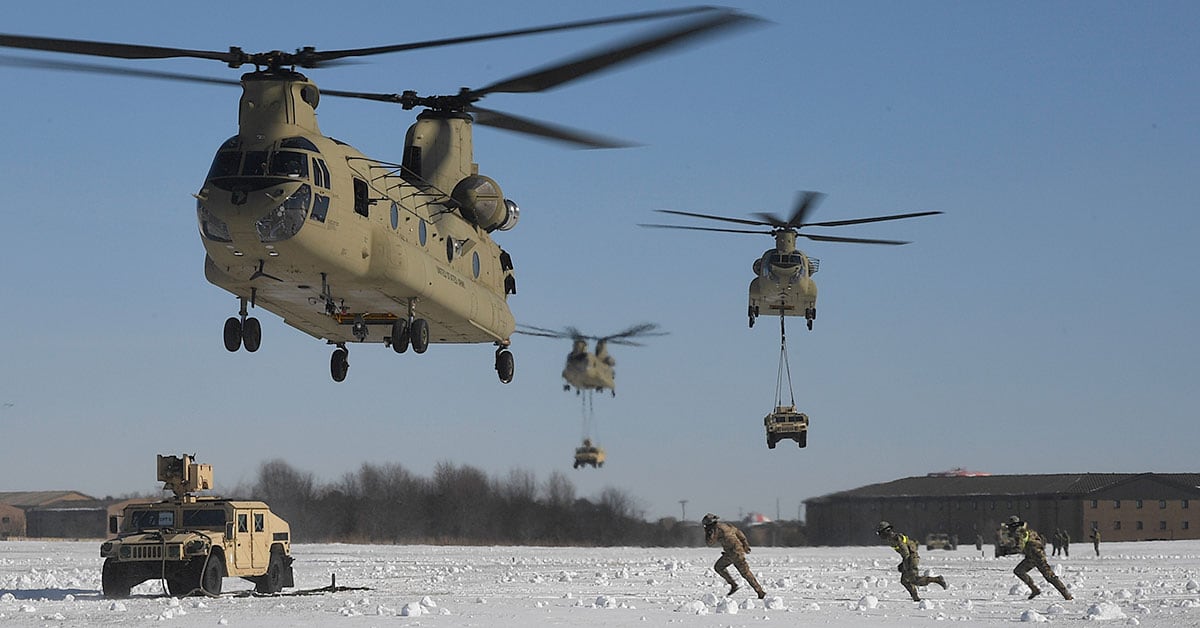WASHINGTON — The Government Accountability Office is praising the military’s use of predictive maintenance — meaning repairs made before equipment breaks — to avoid accidents and save money, according to a recently released report.
This approach has long been encouraged; indeed, the Pentagon issued a policy two decades ago meant to promote predictive maintenance adoption. But GAO said it wasn’t until recent years the services began making progress.
The Army, for instance, first implemented predictive maintenance on AH-64 helicopters in 2005. By 2012, the service was using this approach with the UH-60 helicopter as well as some vehicle programs. By early last year, it had installed predictive maintenance capability on 65% of its CH-47 Chinook cargo helicopter fleet.
Maj. Gen. Thomas O’Connor, the Army Aviation and Missile Command commander, told Defense News in an interview this month that the approach is bolstering safety and saving money.
Previously, it was far more challenging to catch early wear and tear on parts that could, if unaddressed, lead to serious or fatal accidents. Or the Army swapped out too early parts with plenty of life left.
Now, O’Connor said, the service is increasingly catching problems before they generate in-flight issues for its aircraft.
“Every day we are getting these red flags,” O’Connor said. “We’re removing components and replacing them earlier in order to save short-term readiness and prevent any catastrophic failures.”
In one instance, a UH-60 Black Hawk was experiencing some abnormal tail rotor vibrations. Using predictive maintenance capabilities, the Army determined a gearbox was failing.
“During the teardown inspection, we determined that this one was within hours of catastrophic failure, which would have likely resulted in loss of aircraft,” O’Connor said.
In another instance, the Army identified through sensor data that an AH-64 Apache attack helicopter’s nose gearbox was operating abnormally. The Army removed the aircraft from service and determined the part was about to fail.
The Army also identified abnormal vibration in a UH-60 main rotor swashplate, tore it down and discovered the bearings were giving out, which could have led to another catastrophic event, O’Connor said.
He told Defense News the service is increasingly relying on technology to help it determine what repairs are needed when.
For the CH-47 fleet, for instance, the Army used to perform major service on the helicopters at two key times: after 200 flight hours and again after 400 flight hours.
“We have a lot of historical data that helps drive us to understand component wear and services and all associated with the CH-47 fleet,” he said. With the help of that data, “we extended that [second] service out to 620 flight hours.”
RELATED

According to the GAO, predictive maintenance has reduced costs. Aviation battalions with CH-47s avoided costs of $24 million and realigned 6,237 maintenance hours to higher priorities over a six-year period, the report states, though it does not specify the exact time period.
The Army also reported avoiding $215 million in costs and realigned 5,324 maintenance hours to higher priorities after using predictive maintenance on UH-60 Blackhawk helicopters also over a six-year period, according to the GAO.
Now, the GAO is recommending the Army develop a comprehensive implementation plan for predictive maintenance across the force and include a process for monitoring progress and tracking milestones.
At the same time, the Army is looking to a new fleet of Future Vertical Lift aircraft that will be designed with embedded, high-tech, predictive maintenance capabilities and recently began fielding a system on the AH-64 designed to deliver to mechanics real-time data from the predictive maintenance sensors, O’Connor said.
The Army is also beginning to use 3D digital designs to address predictive maintenance and weighing how to use artificial intelligence, for instance, to enhance the capability, according to O’Connor, including developing digital twins of its current fleet of aircraft.
“That is to really to get a digital engineering footprint of the design items and then use some physics-based modeling and stress modeling to really predict fatigue life on components,” he said.
Jen Judson is an award-winning journalist covering land warfare for Defense News. She has also worked for Politico and Inside Defense. She holds a Master of Science degree in journalism from Boston University and a Bachelor of Arts degree from Kenyon College.





